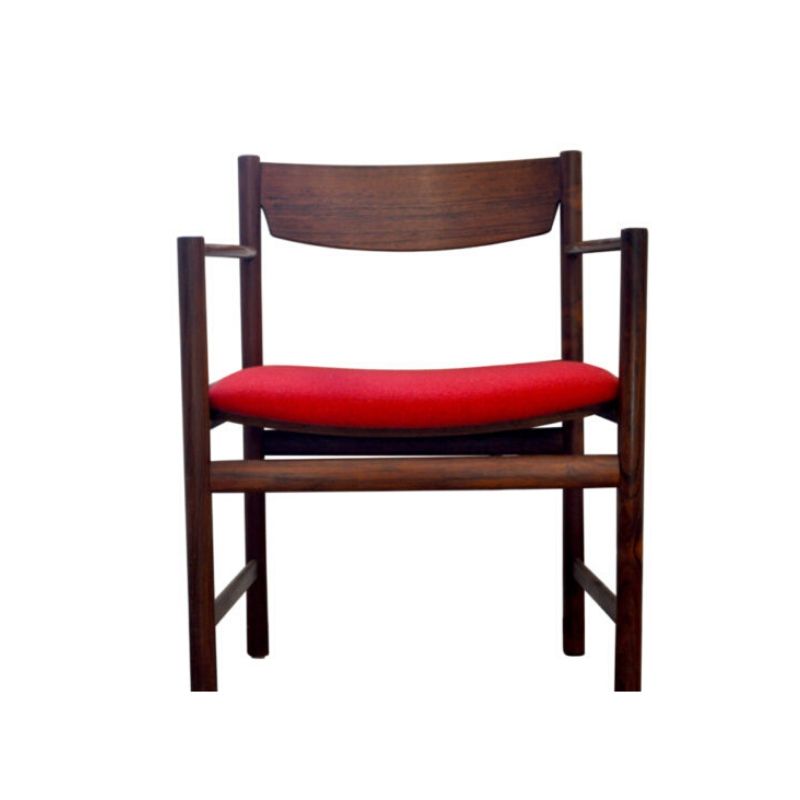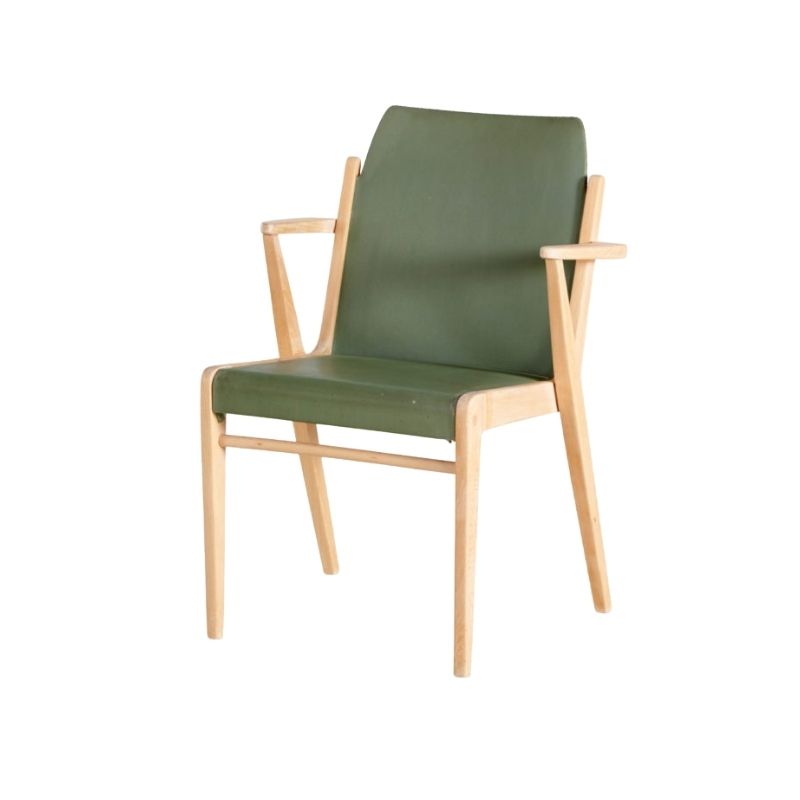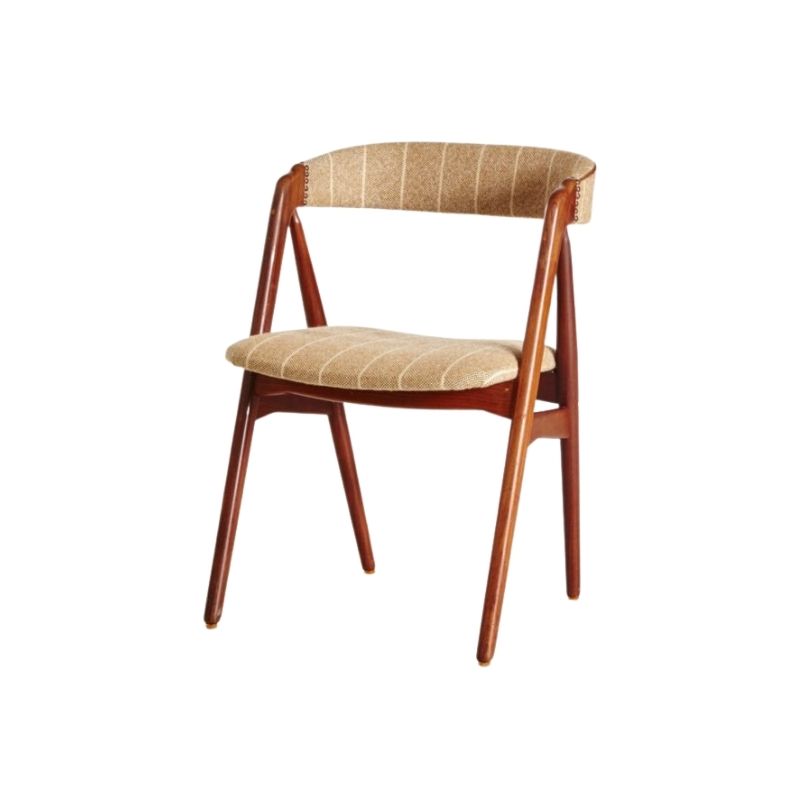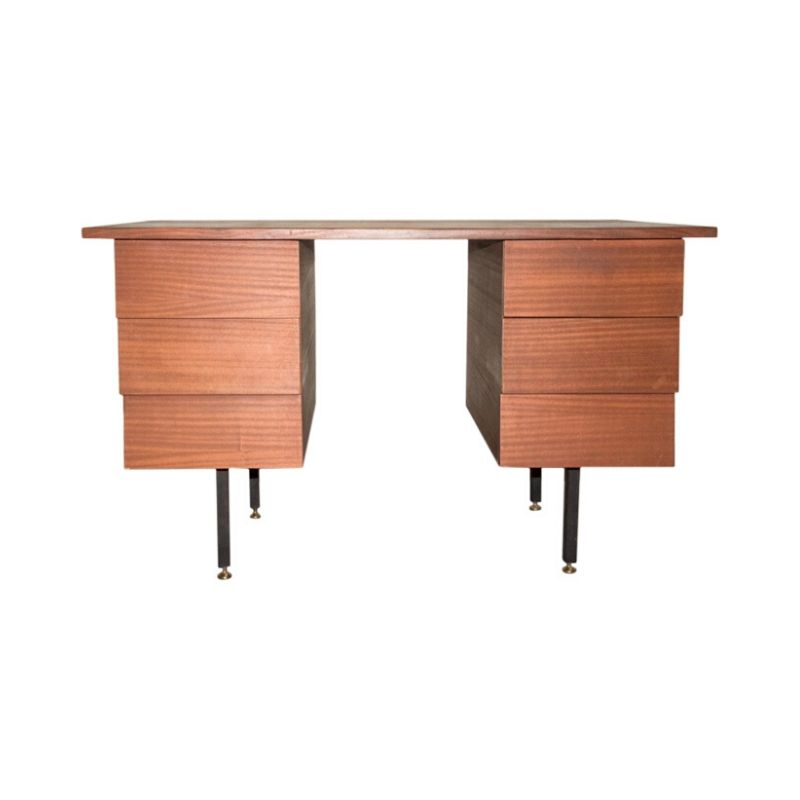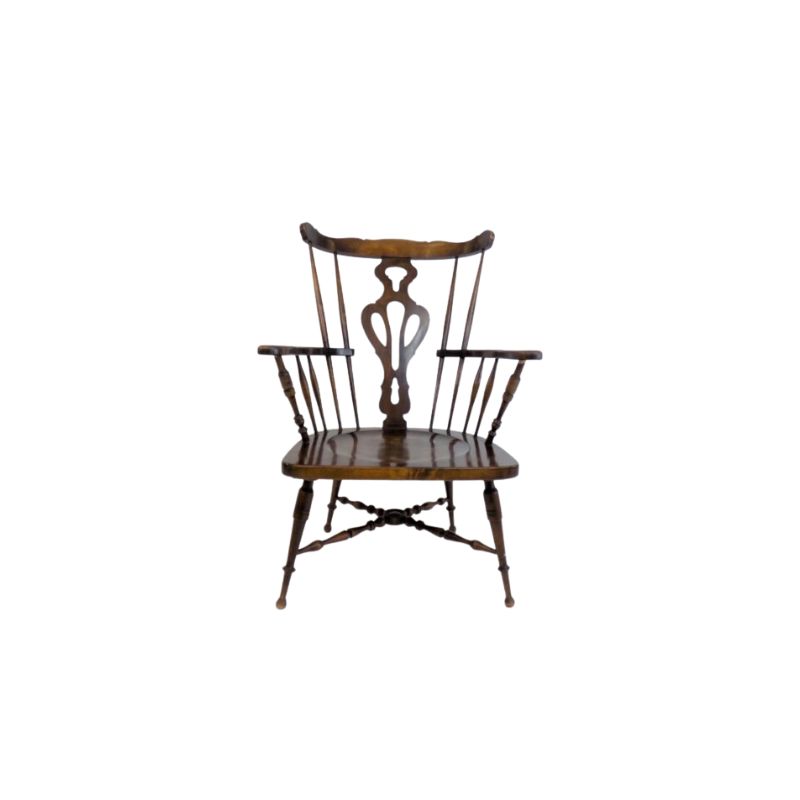I know, only one chair has that finger joint. The rest of the part like shape of the back rest, the curb in the seating area, proportions of the tapered legs seem the same with the rest of the chairs. Maybe only one chair is from different manufacture?? Does anyone know or have seen this?
All the other details looks the same, and I do not think there is much chance it is made by someone else.
I think it is more likely it is a construction change that was meant to strengthen the backrest of the chair. The backrest is laminated and is a high quality plywood, but its connection to the chair leg is a dowel. I have seen damage to these chairs where the backrest will have had force applied to it, which causes the dowel to put enough internal leverage on the plys of the backrest to make them delaminate from one another. Using the finger joint would make the plys of the backrest stronger in that spot.
I seem to recall a discussion about this other Hovmand Olsen chair for Mogens Kold, which appears to have had a change made that would cause this backrest/leg connection to be strengthened, which you can see if you compare the two images.
I suspect it is most likely your one chair is from a different production run than the others.
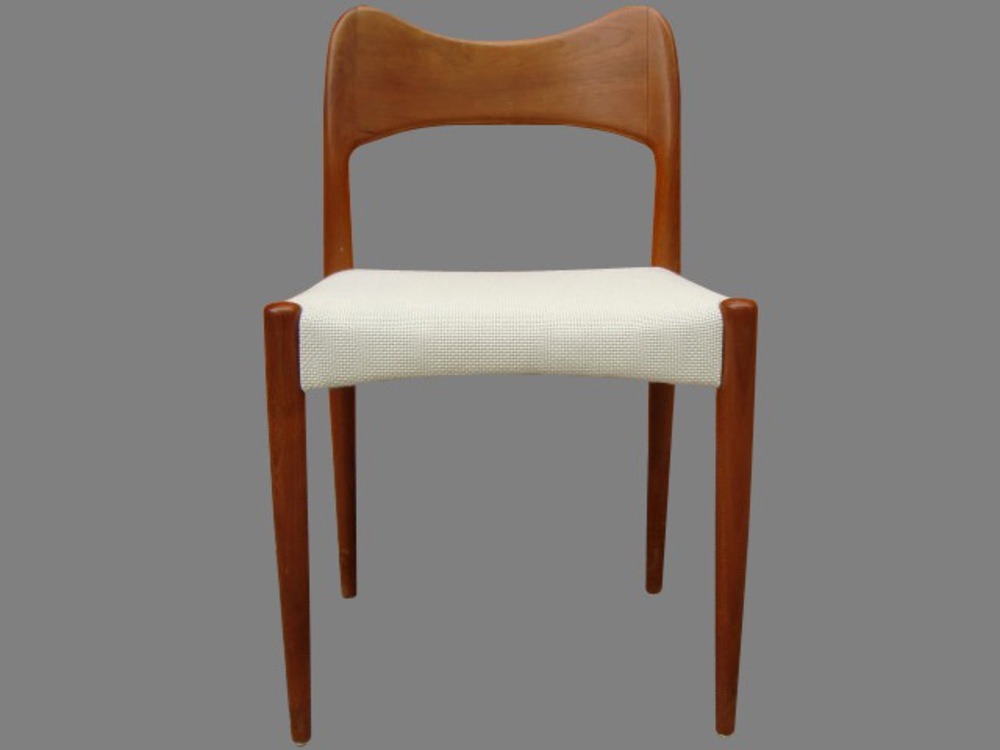
Thank you so much tchp! That really make sense and helps me understand the construction of the chair. I see the design changes of the backrest/leg connection in the other Hovmand Olsen chair for Mogens Kold.
This design change recalls me of Moller chair Model 75 and Model 77.
The Model 77 is designed later than 75, and 77 has the better backrest/leg connection in strength, probably.
Both chairs have great craftsmanship, and no doubt that they are work of art though.
I also can't imagine it is from another manufacturer.
There must be a dowel in both versions of the joint. It distributes the stress of leaning back in the chair across the weak area of short side grain plywood. Without a dowel the backrest would split off the first time a persons tilts back in the chair. There is simply too much short side grain to bear the stress alone.
This general area can crack apart from the dowel inside levering it open. The odd thing is that the finger joint doesn't address this much, as the weakest point is at the top of the lever, i.e. the top of the dowel, which is maybe an inch to inch and a half up. I guess in a naturally weak area every little bit helps?
That routed finger joint and dole pegged joint must have been hard to make. Requires a lot of accuracy and some very good jigs.
They are lovely chairs, but be gentle with them.
Wow! I love your interior!!! I had to go to my PC to see this picture in bigger size instead of my iPhone! I love your collection of teak furniture!
It looks like the table's legs match the legs of the dining chairs. Just beautiful!:D
Question to robert1960. Do you lean back on the dining chair? Have you felt weakness of the backrest support??
Scared to ask, but curious...
Thank you for sharing your lovely photo!
If you need any help, please contact us at – info@designaddict.com


 <img class="wpforo-default-imag
<img class="wpforo-default-imag

